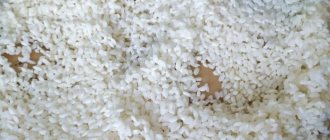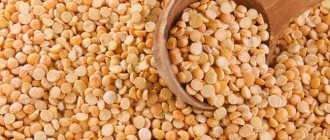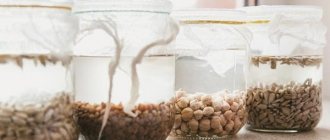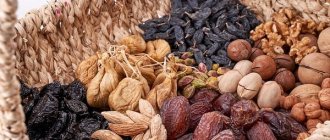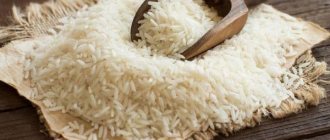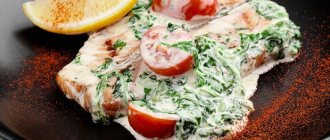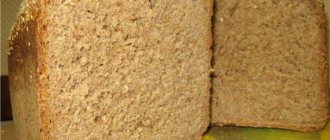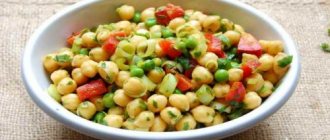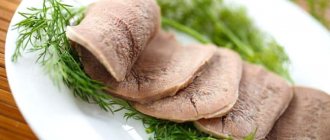How to rinse
Before preparing the oriental dish pilaf, the rice grains must be washed. This applies to any type of rice. Even a novice cook knows why to wash it. It is also useful to find out how to wash rice for pilaf, because the quality of the cooked food depends on this stage. “To wash grains you need to take a large volume of dishes. It is desirable that it be glass - for convenience. A spherical bowl would be a good option.”
Rice should be washed in fairly hot water, as the starch is washed out better in it. It is necessary to lift the grains from the bottom upward, passing them through your fingers to lift the resulting cloudiness. Make sure that all the grains are thoroughly wet. Drain off any white liquid immediately. Pour warm water into the bowl again and run your fingers through the cereal to raise the cloudiness again. Drain the liquid. Repeat the process several times (about 5-7). It is more convenient to use a colander when draining so that the grains do not spill into the sink. Water after well-washed rice will not have any aftertaste and should become clear and drinkable.
It is important to rinse rice grains with warm, hot or cool water, but not very cold, much less ice-cold. Because in ice water it will become brittle, crack, and subsequently boil.
If clean water flows from the tap, you can use it. But if there are any foreign odors or unpleasant taste, it is better to filter it. A feature of rice is that it absorbs liquid even during rinsing, so the taste of low-quality water can be felt in the pilaf. “Water” rice will absorb less oil, so the pilaf will turn out lighter.
You need to know that after and during washing the grains, you should not pick them up or try to get rid of starch by rubbing them between your fingers. Such actions can break the fragile grains, after which they begin to stick together during cooking.
You don't have to rinse the grains when preparing risotto. This dish requires the appearance of a “sticky effect” in the grains, so there is no need to remove excess starch. But usually the grains are still washed to clean the rice, since it is usually sold dirty in packs.
Some cooks rinse the grains with cold water after scalding. This usually applies to long rice when preparing products for pilaf separately.
“It is important to pay attention to cereal producers. Some of them use chemical cereal growth accelerators, which are deposited in the starch layer. This kind of rice should be washed longer so that harmful substances do not enter the body.”
If it didn't work out
So, what you feared happened: it turned out to be tasty, but a porridge with meat. There is nothing that can be done to correct anything at this point. But you need to draw conclusions and not give up culinary experiments.
The rice in the pilaf may stick together, or, on the contrary, it may be dry.
Why does it turn out like porridge?
Pilaf turns into mush for several reasons. Rice grains lose their shape:
- More water than necessary. For example, rice was soaked longer than necessary or excess water was poured into the pilaf.
- The pilaf was overcooked.
- The rice was originally crushed. Or, when washing, long grain rice was broken by rubbing it between the palms.
Lots of starch:
- Poor quality washing of rice, and rice powder got into the pilaf.
- Starchy variety. Here, either refuse such rice or try to fry it before preparing pilaf.
- We disturbed the pilaf with a slotted spoon, and the cooked rice crumbs fell into the broth and thickened the pilaf.
- And a common, common mistake: the recipe is violated, the proportions and temperature conditions are not followed.
If you are unsure of your abilities, but want to cook pilaf, we recommend starting with steamed rice - it is difficult to make it sticky.
Is it necessary to soak
It is important to soak the grains before cooking so that they turn out crumbly and tasty, since washing alone is often not enough.
When cooking a dish, amylopectin, a type of starch, is released into the water, after which a paste appears that prevents the oil from penetrating into the grains. The result is a sticky porridge separately and butter and vegetables separately. The dish turns out greasy and not so tasty, because the paste, although nutritious, is not pleasant to the taste.
An interesting fact is that cereals contain inhibitors that prevent the secretion of gastric juice enzymes. Naturally, this interferes with the digestion process. Brown rice contains a particularly large amount of inhibitor, so it must be soaked before cooking.
How to soak rice for pilaf - each housewife decides for herself, depending on the amount of time given for cooking.
To figure out which method of soaking is better, it’s worth conducting an experiment: soak in hot water, in cold water once, twice... This way you can find out how to soak a certain type of rice correctly and for how long before cooking.
In what water
However, there are certain rules that should never be violated. Soaking in boiling water is not allowed. For inexperienced cooks, this method may seem convenient - in theory, the rice will become much softer and cook much faster. But there is a risk of cooking sticky porridge instead of pilaf. Hot water is known to work best. If you don’t want to heat the water, you can soak it in cold water, but much longer. The best soaking is twice at a temperature of 60 C. Some housewives soak in already salted water.
Delicious pilaf recipe from the chef
✍ Ingredients:
- 500 g meat (lamb or pork)
- 500 g onions
- 500 g carrots
- 1 tbsp. rice
- 300 g vegetable oil
- 5-7 cloves of garlic
- spice mixture for pilaf
- salt
Preparation:
- Cut the carrots into thin strips. Onion - in half rings. Meat - medium pieces.
- Prepare zirvak. To do this, heat the vegetable oil in a cauldron. Add carrots, onions, meat. Fry, uncovered, for 10 minutes. Next - another 10 minutes under the lid. Maintain the fire at maximum. Stir the mixture periodically.
- In the middle of preparing zirvak, add salt and spices to taste. If there is no special mixture of spices, the following will do: barberry, basil, cumin, hops-suneli, coriander.
- Place the prepared (washed and soaked) cereal on top of the zirvak. Spread evenly over the surface and add hot water. Do not stir. Cover with a lid and immediately reduce heat to low. Leave to cook for about 1 hour.
- 5 minutes before the end of cooking, insert the peeled garlic cloves.
It tastes best if, after cooking, wrap the pan in a blanket and leave to steam for about 30 minutes.
How long
After soaking the cereal overnight (for 7-8 hours), in the morning it will definitely be ready for cooking. But you should pay attention to the hardness of the cereal. If it is not very hard, and it takes a long time to get wet, then it may be overcooked even before the water boils. Therefore, this method is only suitable for hard varieties. Some soft varieties are saturated within half an hour, while others hard, for example, devzira and basmati, after 2 hours. With experience comes an understanding of how long each variety needs to be soaked.
If you soak grains in hot water, it is enough to wait 2 hours, if in cold water - at least 3. It is recommended to soak red rice for 3-5 hours - the cooking time will be significantly reduced. Brown rice requires a special approach - it is hard, and for preparation it should be soaked for 8-12 hours.
Popular types
Uzbek pilaf in a cauldron
From the huge variety of types, we will consider the most famous and recognizable products that are purchased in retail supermarkets or ordered online in online stores.
Basmati, "the world's rice king". Long grain rice, grown in India and Pakistan, has a delicate floral aroma, its long thin grains smelling of sandalwood oil. It has a delicate structure with a pronounced nutty taste. Used in hot and spicy foods of the Middle East, it is used to prepare delicious side dishes and main dishes. This variety of grain is the longest and most expensive.
Arborio. The Italian coarse-grained variety has a special property - after the starch is separated from the grains, the core remains solid; this variety is suitable for preparing the well-known risotto. To prepare the rice, do not cook it until completely cooked, but cook it after removing it from the oven. The grain remains dense inside, and the dish retains a light nutty flavor and delicate creamy structure.
Camolino. Very tasty, sticky rice. The texture is ideal for preparing many dishes according to oriental recipes. In recent years, it has been used as a side dish; rice dishes with vegetables are considered especially tasty; the kernel filling is used in aromatic oven-baked pies.
Jasmine, "Asian rice", is a popular Thai white product. It is very rich in starch, so before use it is washed several times in cold water. It is considered a more affordable substitute for basmati; it is used in the preparation of many Asian dishes; salads, side dishes, and desserts are prepared on its basis. It is aromatic, sticky, in boiling water the kernels retain their shape, are soft, and the dish is crumbly, not overcooked.
Wild rice, American variety. It is grown in the only place - on the Great Lakes of America, where harvests of this variety are harvested. It has a light nutty aroma and a pleasant sweet taste. The composition contains dietary fiber, vitamins, folic acids, and useful minerals. Dishes made from black wild rice are satisfying, low in calories, and balanced in healthy elements. To add piquancy to food, long grains of rice are added to salty and sweet dishes. American rice has a positive effect on the human digestive tract and nervous system.
Read also: Pink Palette Wiki Fandom
Do I need to soak parboiled rice?
There is no definite answer to this question, because for some, washing three times a day is enough, while for others, soaking is correct. Steamed grains do not stick together during cooking, which is a definite plus. In addition, they are the most crumbly.
Many chefs believe that there is no need to rinse steamed cereals: during processing, the cereals undergo a high degree of purification. And this is true - from the technical side, washing is not required.
There is a large selection of steamed rice on store shelves today, which indicates its popularity. The question arises, how to steam rice for pilaf. Steaming is a special technology that improves the quality characteristics of cereals. Initially, unprocessed cereals are soaked in water, after which, under steam pressure, the starch in them is compacted due to gelatinization. After this treatment, the cereal does not become soft during the cooking process.
If you soak steamed rice for a while, you may notice that the water in the bowl will turn white. Therefore, some housewives prefer to soak steamed rice, because it turns out more tasty and is cleaned not only of debris, but also of possible chemical fertilizers used.
“For hygienic purposes, steamed rice must be at least rinsed.”
Effect of rice cleansing on the body
Thanks to the absorbent effect of this cereal, with its regular use, there is an improvement in metabolism and overall well-being. Especially if eating rice is combined with drinking enough water, herbs, vegetables and fruits.
The rice diet is based on this property to cleanse the body of salts, toxins and wastes that the body itself, for various reasons, has ceased to cope with.
Nutritionists have noticed that rice grains that are repeatedly soaked in water have the best cleansing properties. Cleansing the body with such rice helps remove harmful deposits from all areas:
- intestines;
- liver and biliary tract;
- joints;
- vascular system;
- epithelial tissues.
As a rule, one of the “side effects” of a rice cleanse is weight loss, which is why detoxifying the body with rice is so popular among dieters. But to get results, you need to know about the nuances of the rice diet, and also study the question of the benefits and harms of rice.
Contraindications will be discussed below, but for now let’s get acquainted with the most popular methods of cleansing the body using soaked rice.
Cooking in a slow cooker or double boiler
A multicooker and a steamer are unique household appliances. With their help, cooking brown rice is easy, and the results are excellent. Here are some tips on how to properly cook brown rice in these “miracle pots.”
The process of preparing cereals is no different. After washing and soaking, transfer the rice to a multi- or steamer bowl. The multicooker has a “Rice” and/or “Pilaf” mode. That's what we need. We turn it on and wait for the ready signal.
All models of steamers have a container for boiling rice. Pour a small amount of water into it. Due to the hardness of the grains, you will have to add very little water to the same bowl; steam alone will not be enough. Half an hour in the steamer and the rice is ready.
Now you know all the secrets of how to cook brown rice correctly. Bon appetit and be healthy!
The nutritional value
| Name | Contents per 100 grams | % of daily value |
| Calcium | 28 | 3 |
| Potassium | 115 | 2 |
| Magnesium | 25 | 7 |
| Phosphorus | 115 | 16 |
| Manganese | 1.09 | 52 |
| Zinc | 1.09 | 11 |
| Iron | 0.8 | 6 |
| Name | Contents per 100 grams | % of daily value |
| Thiamine (B1) | 0.07 | 6 |
| Riboflavin (B2) | 0.01 | 1 |
| Niacin (B3) | 1.62 | 11 |
| Pantothenic acid (B5) | 1.01 | 20 |
| Pyridoxine (B6) | 0.16 | 13 |
100g of brown rice contains 331Kcal. This represents 22% of the daily caloric intake for an adult.
Useful qualities and contraindications
Brown rice is useful:
- for cardiovascular diseases - high potassium content, which strengthens the heart muscle and prevents the development of a heart attack;
- for the prevention of diseases of the nervous system (B vitamins);
- in case of metabolic disorders, as it reduces cholesterol and blood sugar levels;
- in case of impaired renal function - helps eliminate edema;
- for allergies - does not contain gluten, which often causes it.
In addition, brown cereal will help you lose weight ! Fiber will cleanse the intestines, “evacuating” toxins from it. This product is a complex carbohydrate, so the feeling of fullness comes faster and lasts longer. Brown rice is included in fasting days and diets.
Nutritionists advise including this cereal in the menu no more than 3 times a week. Although this cereal has no contraindications, there is no need to overdo it.
Negative qualities
Excessive indulgence in any product can be harmful to health. So before you become a brown rice fan, there are a few things to consider.
Often, suppliers and manufacturers of brown rice, given the increased demand for this product, simply tint white rice.
To avoid disappointment when using such a product, you should not buy it from private sellers.
Large manufacturers treat rice with glucose and talc before transporting it, which can be harmful to health if consumed for a long time.
Delicious recipe! Technological map of Ukrainian borscht
We should not forget that the amount of dangerous fertilizers in countries that practice industrial rice cultivation is very different from the standards familiar to Russians.
If you purchase a large batch of brown rice, then during long-term storage it can not only lose some of its beneficial properties, but also its nutritional value.
Therefore, a number of conditions must be met:
- store in small batches;
- maintain a cool temperature in the room where the product is stored;
- keep the rice in a well-closed ceramic or tin container;
- When storing, avoid high humidity, which can spoil the cereal.

